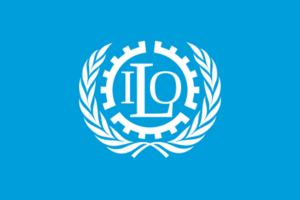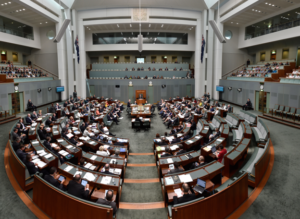November 18th, 2022 – World Day for the Prevention of and Healing from
Child Sexual Exploitation, Abuse and Violence
Statement by the Parliamentary Task Force on Human Trafficking Regarding
the Prevention of Online Child Sexual Exploitation
The World Day for the Prevention of and Healing from Child Sexual Exploitation, Abuse and Violence was proclaimed by the United Nations General Assembly in a resolution for the first time this year on November 7th, 2022. The First Lady of the Republic of Sierra Leone, H.E. Fatima Maada Bio who is a survivor of child marriage, told the UN General Assembly, “Child sexual abuse is a global public health crisis. We must acknowledge this problem and take every necessary action to protect our children, especially our girls from this tragic human condition.”
With COVID-19 lockdowns, increases in armed conflicts around the world, and cross-border online platforms to exploit children through online child sexual abuse has become a growing method of exploitation and trafficking recruitment. Most countries have national anti-trafficking laws, but fewer countries have laws which protect children online from trafficking and sexual abuse.
Child Sexual Exploitation Online – A Business Model for Traffickers
Online sexual exploitation and abuse of children (OSEAC) is one of the fastest growing threats against children. In 2021, 21 million reports of online child sexual abuse were received by the US National Center for Missing and Exploited Children, and their Cyber Tipline received over 29 million reports of which 93.5% were resolved to locations outside of the U.S. Additionally, the Finnish human rights group Protect Children published the largest survey ever on the thoughts and behaviors of people who watch child sexual abuse material (CSAM) online in the Stanford Internet Observatory’s Journal of Online Trust and Safety. It found that 42% of respondents to the survey said they had sought direct contact with children through online platforms after viewing CSAM, and 58% reported feeling afraid that viewing CSAM might lead to them committing abuse in person. There is a rapid rise in OSEAC globally, and thus efforts should be established to prevent future growth.
The most prevalent form of online sexual abuse is the advertisement of children for sexual services through websites and social media. According to the Organization for Security and Cooperation in Europe (OSCE), “Such advertisements for sexual services are now central to the human trafficking business model…They propose transactions with minors that are exploitative, illegal and tantamount to rape.” Images for these advertisements are not always sexually explicit, but the intent is often to propose exploitive and illegal sexual experiences with children. A study by Thorn concluded that 75% of sex trafficking victims are advertised online.7 Online platforms promote the sexual abuse of children, frequently exposing them to hundreds of people.
Europol also stated that, “The online advertisement of sexual services is an increasing phenomenon relating to trafficking human beings for sexual exploitation, with children being advertised as adults.” Additionally, the Federal Criminal Police Office in Germany has reported a 10% increase in human trafficking in 2021 as compared to 2020, and the abuse of children in trafficking cases increased even more significantly by 23% as compared to 2020. The average age of victims was fifteen, and the crimes under this umbrella include the creation of child sexual abuse material (CSAM) as well as offline human trafficking. According to Emilio Puccio, the Secretary-General of the European Parliament Intergroup on Children’s Rights, “Europe, has now become the epicenter of yet another pandemic. Pervasively and insidiously, the EU alone accounts for more than 70% of all Child Sexual Abuse material hosted in the world. In the European Union alone we went from 23,000 reports of child sexual abuse online in 2010 to 725,000 reports in 2019. And these figures are considered likely to be conservative.”
Recommendations for Legislators: What is illegal offline should be illegal online
Most platforms do not have meaningful safeguards in place to prevent this form of online sexual abuse, which makes them attractive to exploiters who operate with immunity. Therefore, it is our recommendation that current and future legislation should ensure:
▪ The providers of electronic services do not become enablers for traffickers and those seeking harm to children.
▪ Providers have clear rules and specific obligations to detect and remove CSAM as well as a dedicated focus on the development of innovative tools to protect children on the internet.
▪ Additional support is provided for those who are supporting efforts to detect traffickers and protect children from predators.
▪ Less than 1% of victims of trafficking are ever identified, and consequently, legislative solutions should ultimately seek to increase victim identification.
International Legislative Efforts to Stop Online Child Sexual Abuse Material:
Fortunately, there are current legislative efforts throughout the world to address some of these concerns. This list is not exhaustive but represents a sampling:
UNITED STATES:
End Child Exploitation Act: Due to the increase in contacts to the National Center for Missing and Exploited Children Cyber Tipline, law enforcement has become overwhelmed. This law would address some of these concerns by providing law enforcement agencies an extension to 180 days to conduct investigations which would ultimately allow more reports to be investigated, more victims to be identified, and more perpetrators to be prosecuted.
This bill revises the federal framework governing the prevention of online sexual exploitation of children. It clarifies that there is no immunity for technology companies to knowingly distribute CSAM. It establishes a National Commission on Online Child Sexual Exploitation Prevention to develop best practices for interactive computer services providers including social media to prevent, reduce, and respond to the online sexual exploitation of children.
EUROPEAN UNION:
Fighting Child Sexual Abuse: detection, removal and reporting of illegal content online: This current EU legislation seeks to combat and prevent child sexual abuse and exploitation. It also provides a good opportunity address some of the aforementioned concerns as well. Understanding this, the Organization for Security and Cooperation in Europe (OSCE) has recommended the inclusion of two targeted amendments to this legislation that provide enhanced protection to minors specifically through the widely prevalent form of online child sexual abuse:
• Ensure that the new directive covers the online exploitation of children through prostitution: In Chapter 1, Article 2(l), include in the definition of “child sexual abuse material” advertisements proposing or offering a commercial sexual transaction with a minor. This can be accomplished by:
1) Including in the definition of“child sexual abuse material”a reference to Article 2, point (d) of Directive 2011/93/EU; or,
2) Inserting in the definition of “child sexual abuse material” the following language “… as well as acts (e.g. advertisements) proposing or offering the opportunity to engage in an act that would meet the definition of ‘child prostitution’ in Art. 2(d) of Directive 2011/93/EU.”
• Ensure that children are not featured in advertisements for sexual services: Require theapplication of age verification to persons depicted in sexual service advertisements, not only viewers of sexually explicit material.
o InArticle4(3),amendthepassage“…shalltakethenecessaryageverificationand age assessment measures to reliably identify child users on their services… “ to the following: “… shall take the necessary age verification and age assessment measures to reliably identify child users and children depicted in sexually explicit content or content proposing or offering an act of child prostitution as defined in Art. 2(d) of Directive 2011/93/EU in order to prevent the uploading and advertisement of such materials…”
Protecting Young Persons from Exposure to Pornography Act15: Requires pornography companies to implement age verification measures to prevent minors from accessing adult content. This has passed Senate Committee and could be in the House of Commons before Christmas.
Stopping Internet Sexual Exploitation Act (SISE Act): The SISE Act requires pornography companies to keep records of age and consent before publishing videos of sexually explicit material. It also allows individuals to revoke consent. This was introduced and is at Second Reading in the House of Commons. It is expected to come up for debate in 2023.
AUSTRALIA:
Online Safety Act 2021: The Coalition Government created the world’s first eSafety Commissioner which introduced:
a) A new adult cyber-abuse take-down scheme and a stronger cyberbullying scheme;
b) A set of Basic Online Safety Expectations to hold industry to account;
c) Reduced take-down periods from 48 hours to 24 hours; and
d) A continuation of the Online Content Scheme, while giving the eSafety Commissionerpower to respond more quickly to the ‘worst of the worst’ content such as child sexual abuse material – no matter where it is hosted.
The Coalition also gave the eSafety Commissioner the power to order tech companies to report on how they are responding to these harms and companies will face hefty fines of up to $555,000 if they don’t report back. The eSafety Commissioner also issued legal notices to big tech, including Apple, Meta (and WhatsApp), Microsoft (and Skype), Snap and Omegle under the Basic Online Safety Expectations – a key part of the Online Safety Act 2021. These legal notices require big tech to report on the measures they are taking to tackle the proliferation of child sexual exploitation material on their platforms and services.
As announced on March 18, 2022, the Coalition committed an additional $31.6 million over 5 years for online safety, including $27.1 million for eSafety – of which $10 million will continue to support community grants program to support online safety education and projects focused on women and children.
GUATEMALA:
Within the framework of protecting children and adolescents from sexual exploitation online, Guatemala recently passed two laws in 2022 which criminalize the crime of seduction and the crime of blackmail through the use of technology.
Conclusion
Online sexual exploitation is a crime that extends beyond borders, and therefore, a multinational response is essential to any effort to stop this crime and protect children. These legislative actions demonstrate an encouraging trend internationally that this topic is starting to receive the attention it deserves. Human trafficking and child sexual exploitation is an organized transnational crime, and we look forward to the growing cooperation and synergy between nations in the future as legislators throughout the world prioritize laws which ensure that electronic services are not used for illegal purposes to harm children.
7 See Thorn and Vanessa Bouche, Survivor Insights: The Role of Technology in Domestic Minor Sex Trafficking (Los Angeles: Thorn, January 2018), p. 7
8 See Europol, Criminal networks involved in the trafficking and exploitation of underage victims in the European Union (The Hague: Europol, 18 October 2018), p. 7


